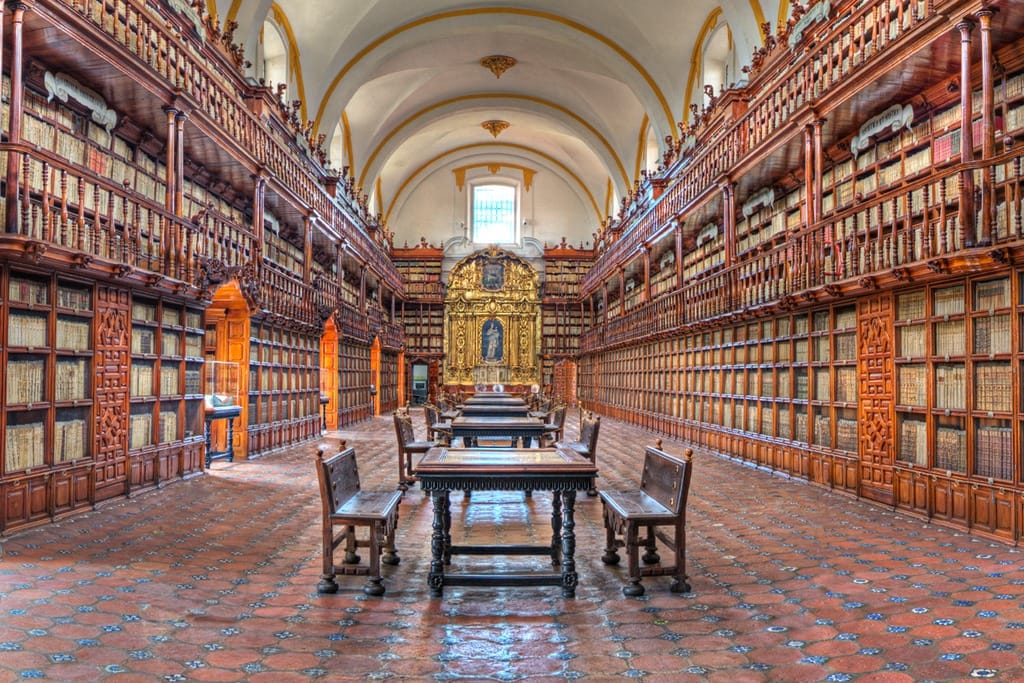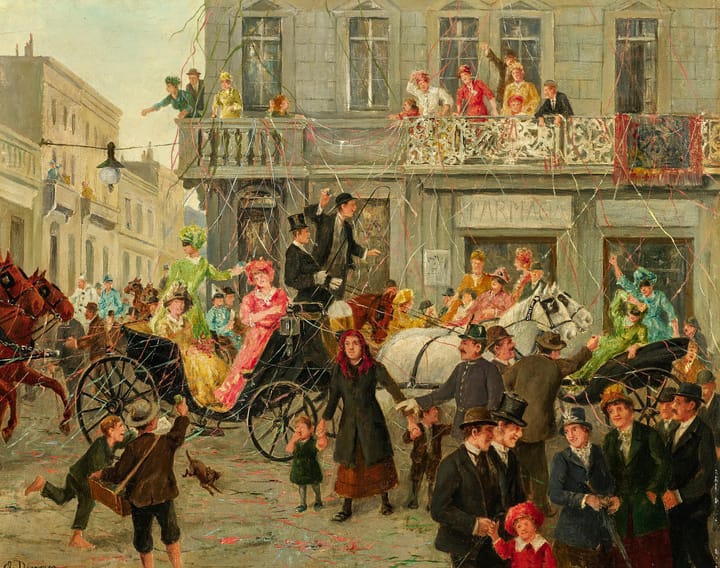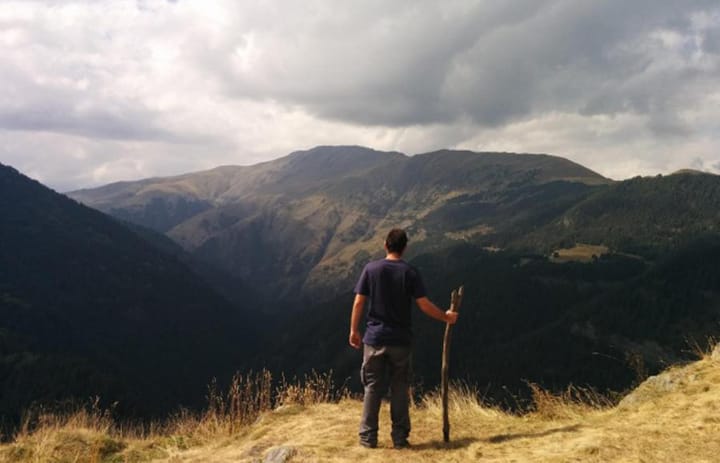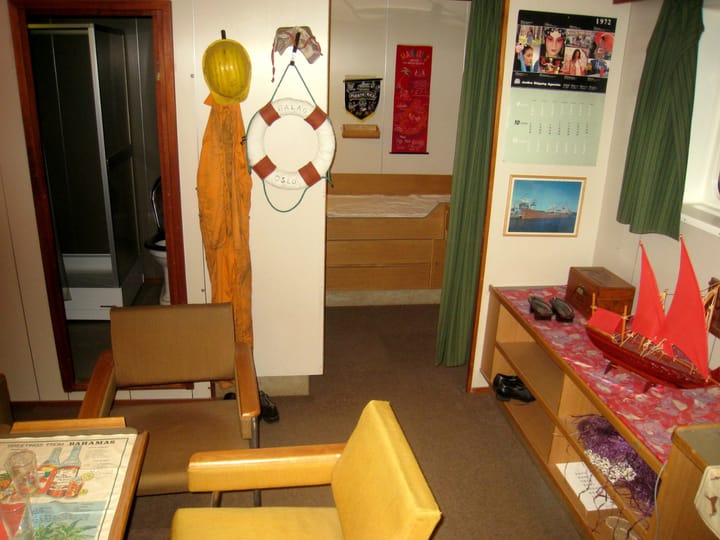Interiors: Biblioteca Palafoxiana, ancient library in Ciudad de Puebla, Mexico.
This beautiful library room represents one of the great intellectual repositories of Colonial Mexico.

This is the first article in a new series I want to do on this blog: “Interiors,” where we can examine history, culture and glimpses of both through an image of an interior room somewhere in the world. I used to do this series on my old blog (the one that existed two or three incarnations before this one), and I thought I’d bring it back.
One of my favorite authors, Jorge Luis Borges, famously said, “If Heaven exists, it must be some kind of library.” He might elect to choose to spend eternity in a place like this, the stunningly beautiful reading room of the Biblioteca Palafoxiana in Ciudad de Puebla, Mexico. There is definitely a Spanish religious look to this room, with its design resembling one of the grand cathedrals of the Old World and which were liberally reproduced in the New. In fact there’s a gilded altar at the far end, containing a replica of a famous religious sculpture called the Madonna of Trapani, the original of which dates from the 14th century. The woodwork is exceptional. Notice also the old baked tile with the smaller centerpieces, which look like the classic Dutch-made tilework of the 17th century. And of course the wonderful ancient books. On the wall at left you see several illuminated niches which contain modern display cases–presumably their contents are priceless old folios, first editions and other works of note. When I visited the Huntington Library for a research trip in 2014, I observed various old books, such as a first folio of Shakespeare, displayed in this manner.
The Palafoxian Library was one of the early cultural jewels of colonial Mexico. It was established in 1647 by Juan de Palafox y Mendoza, an important Catholic bishop in 17th century New Spain. The bishop founded the College of San Juan in the city of Puebla and donated 5,000 of his own books as its seed. This building, however, was not constructed until 1773, by a successor bishop, and utilized materials and craftsmen from all over Spain’s holdings in the New World. The College and this library has remained a remarkably steady repository of knowledge for over 350 years. Today it boasts more than 45,000 rare books and manuscripts, including a collection of works confiscated from the Jesuit order when the order was persecuted by the Spanish (and other European) authorities, and hence expelled from Mexico, in 1767. The library was originally two stories, but the third row was added in the 19th century to accommodate more books.
Libraries really are one of the true keys of civilization. Technology does what it does, but the book and the library, much more even than the internet or other electronic means of data storage, are the basic units of human intellect and will continue to be so for a very long time. Places like the Palafoxian Library are not mere repositories of books and papers. They’re nerve centers of culture, science, music, religion, art, architecture and history. Places like this room should be among the most cherished and stringently-protected creations of human beings. This one, in fact, is: in 2005 it was entered into the United Nations’s Memory of the World Program, which does for learning, ideas and documents what the UNESCO World Heritage Site program does for historical and cultural sites.
The photo is by José P. Torrealba and is used under Creative Commons 3.0 (Attribution) license.
The Value Proposition
Why should you be reading this blog, or receiving it as a newsletter? This is why.
☕ If you appreciate what I do, buy me a virtual coffee from time-to-time to support my work. I know it seems small, but it truly helps.
📖 You could also buy my newest book.
🎓 Like learning? Find out what courses I’m currently offering at my website.
📽 More the visual type? Here is my YouTube channel with tons of free history videos.



Comments ()